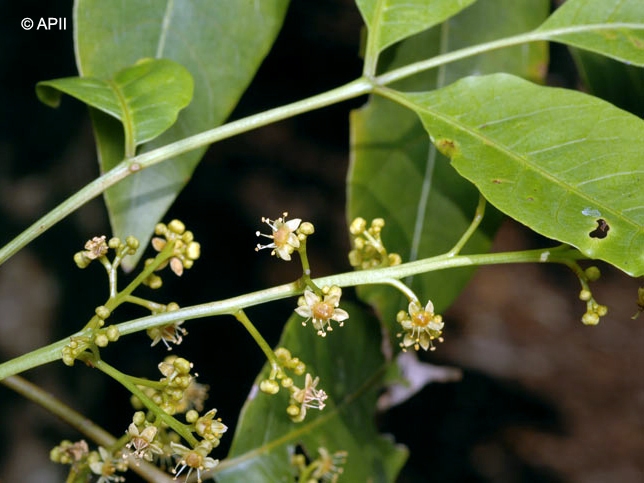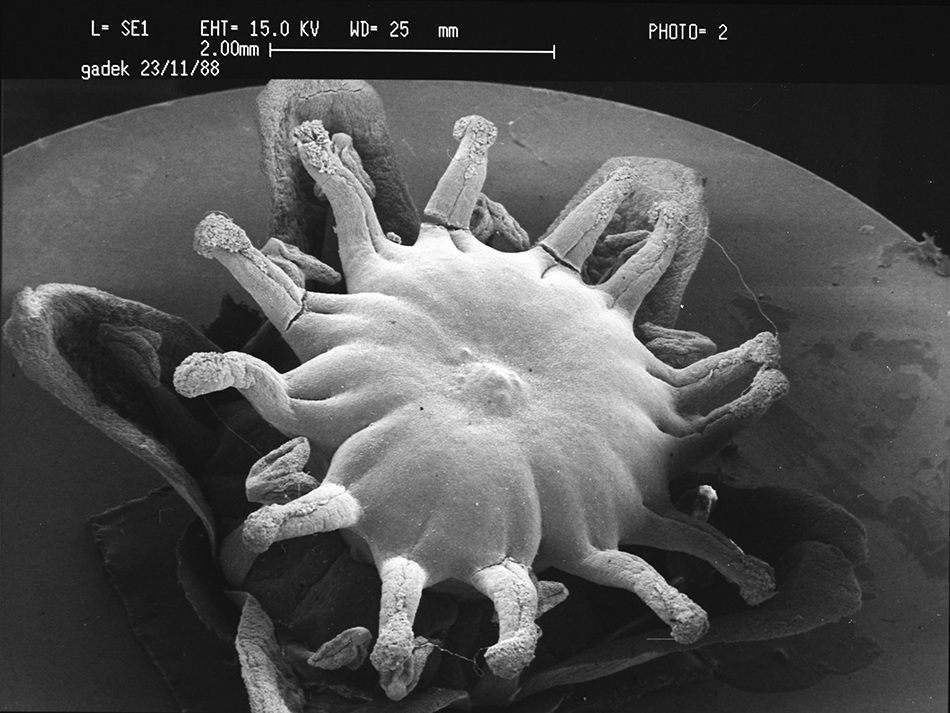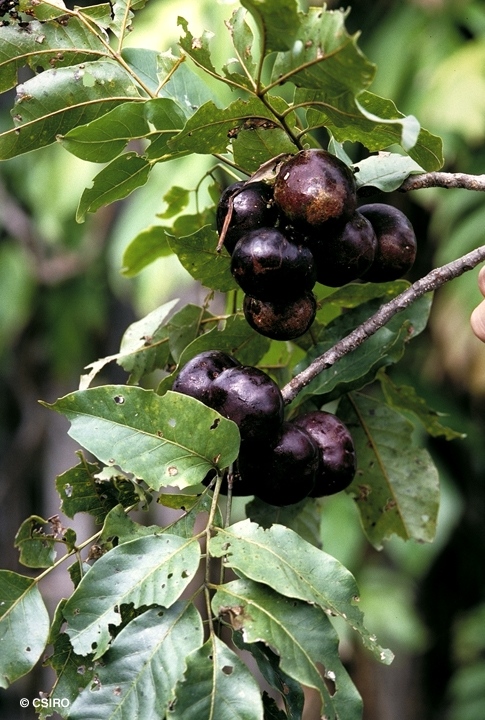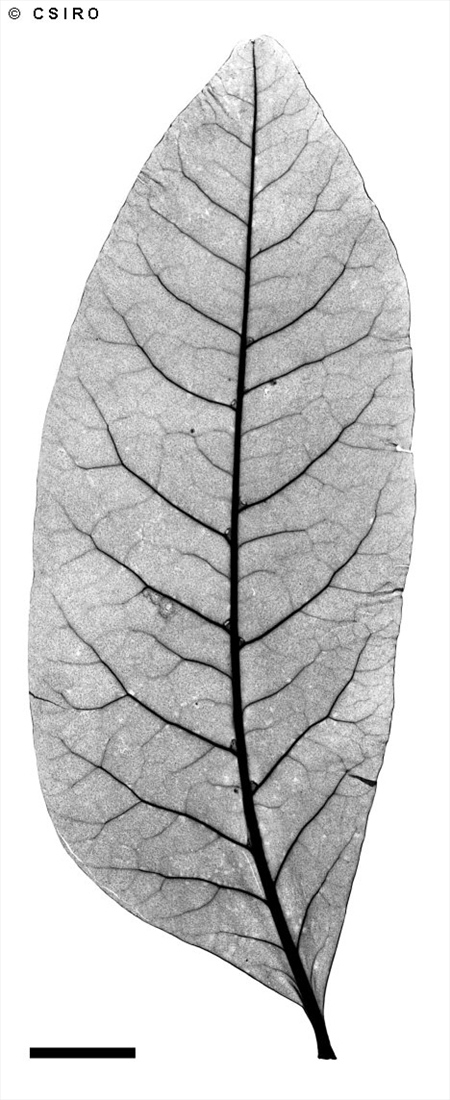Australian Tropical Rainforest Plants - Online edition
Pleiogynium timoriense (DC.) Leenh.








Leenhouts, P.W. (1952) Blumea 7: 159.
Plum, Tulip; Plum, Burdekin; Plum, Sweet; Sweet Plum; Tulip Plum; Burdekin Plum
Large trees usually with large plank buttresses. Blaze layering fine but conspicuous.
Leaf blades about 4-10 x 2-6 cm. Stalk of the terminal leaflet significantly longer than those of the lateral leaflets. Midrib raised on the upper surface. Pale, slightly elongated lenticels usually obvious on the leaf-bearing twigs. Domatia, if present, are foveoles, usually with hairs at the opening.
Fruits depressed-obovoid, about 20-25 x 20-38 mm. Endocarp hard and woody, about 1.8-2.5 x 2-3.5 cm. Seeds about 5-12 per fruit. Cotyledons 3-veined. The hard stony remains of the fruit normally persist beneath mature female trees. Each fruit or seed kernel resembling a flying saucer with portholes around the equator.
Cotyledons linear, about 20 x 1-1.5 mm. First pair of leaves trifoliolate, middle leaflet sometimes toothed or lobed. At the tenth leaf stage: leaflets ovate, unequal-sided, apex acute with a short mucro, base rounded, hairy along the midrib and lateral veins; petiole and rhachis of compound leaf, stem and terminal bud clothed in pale tortuous hairs. Seed germination time 28 to 60 days.
A widespread species in CYP, NEQ, CEQ and southwards to south-eastern Queensland. Altitudinal range from near sea level to 1000 m. Grows in drier rain forest and monsoon forest. Also found in Malesia and the Pacific islands.
This species produces a decorative timber which is seldom seen in furniture because of the scarcity of good logs. White-fleshed fruits are sometimes found. Once upon a time it was generally believed that the fruits become more palatable after burial in sand for some days.
The timber of this species has been used for the manufacture of musical conductors batons. Swain (1928).
Produces quite a decorative timber which has seldom been utilized.
Wood specific gravity 0.93. Cause et al. (1989).





